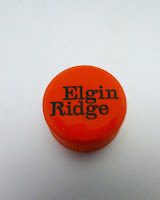Dao. Burgundy. Lodi.
A Trio of Reds
Casa de Mouraz 2011 (DAO), 13.5%, €17.50 Mary Pawle
The grapes for this excellent red come from several vineyards of Casa de Mouraz “some of which are mentioned in documents from the 16th century”. They were no doubt organic then and are organic now.
The wine has been matured in fine Nevers oak for 8 months and is a blend of local grapes: Touriga Nacional, Tinto Roriz, Alfrocheiro, Jaen and the almost unknown Agua Santa.
It is an intense red colour with violet hue and the legs are in no hurry to clear. You’ll find ripe rich fruits in the aromas. It is smooth, spicy, with a lovely mineral streak, and a lasting finish. A serious drop indeed and Highly Recommended.
Ambroise Lettre d’Eloïse Coteaux Bourguignons 2013, 13%, €17.85 Le Caveau
The wines of Maison Ambroise, certified organic since 2013, are regarded as classic Burgundy “with distinct terroir influenced personalities”. This, new to the Le Caveau range, is 100 per cent Pinot Noir and has been aged in 400l barrels, two to five year old, for ten months. No fining or filtration has been applied so be sure to decant.
By the way, did you know that synonyms for Pinot Noir include Pinot Nero, Pinot Negro, Spatburgunder, Blauburgunder.
By the way, did you know that synonyms for Pinot Noir include Pinot Nero, Pinot Negro, Spatburgunder, Blauburgunder.
Colour here is a pale ruby; red fruits in the aromas, most noticeably cherry. It is wonderfully fresh, the lively fruit flavours well matched by the acidity, a perfect balance, plus an excellent finish. Highly Recommended.
Saw a few matching suggestions and the one that made most sense was Roasted duck breast with plum sauce. One from BBC Food here.
Jewel Collection Old Vine Zinfandel 2012 (Lodi, California), 14%, €16.90 Karwig Wines
Interestingly, this was “tested” on a Friday, then the Vacuvin was applied. The bottle was finished off on the following Wednesday and a small improvement was noted! The vine is made by a cooperative of growers from “gnarled 40 year old vines”.
Ruby is the colour, tending towards violet. And there are rich jammy aromas, plus vanilla. All that rich fruit appears too on the warm palate but nicely balanced by the acidity, some spice too, vanilla again, plus a decent finish. Pair with hearty dishes of beef, pork, fowl and various game. Recommended.

































